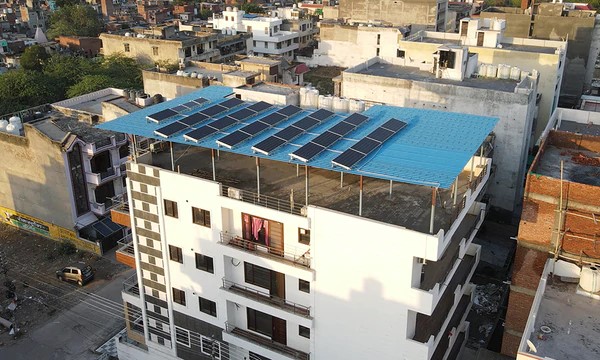Solar power systems are divided into three categories: grid-connected, off-grid, and hybrid. The grid-connected solar system is the most popular of all the numerous types of solar systems deployed across the world.
A $500 billion investment in renewable energy is expected in India by 2028, making the nation one of the most attractive markets for solar. A total of 227 gigawatt-hours of renewable energy must be generated by India by 2022, with solar power accounting for around 114 gigawatts (GW), wind power accounting for 67 GW, and other sources such as hydro and bio making up the remainder. As of February 2021, the country’s installed renewable energy capacity was 94.43 GW.
Around 49% of the world’s power will be produced by renewable sources by 2040, according to current projections. In addition, the Indian government plans to build a renewable energy-powered green city in each Indian state.
Grid-connected solar systems, also known as grid-tied, grid inter tied, grid back feeding, utility-interactive, and on-grid solar systems, are gaining popularity as a way to generate alternative energy by connecting solar panels to a utility power grid.
What is an On-Grid Solar System?
A grid-connected solar system is also known as a grid-tied electricity system or a grid-connected photovoltaic system. The utility grid is connected to this solar power installation that generates electricity.
Solar panel for home, inverters, a power conditioning unit, and grid connection equipment are all included.
Solar power systems that are grid-connected range in size from modest residential rooftop systems to big utility-scale solar power plants. Unlike stand-alone power systems, they rarely employ integrated battery solutions.
A grid-connected solar power system is a very cost-effective and simple method to add solar energy to your house. Solar panels and an inverter are used to generate power in this arrangement. Solar panels convert sunlight into direct current (DC) power, which is then converted into useable alternating current (AC) electricity using an inverter.
During the day, a solar power system connected to the grid transfers surplus solar electricity from the panels to the grid. Then, at night, when the sun has set and the panels are no longer producing power, it taps into the grid for power.
Components of a Grid-Connected Solar System
Grid-connected or on grid solar system generate solar energy during the day and then draw electricity from the power company when needed at night or in poor weather since they are connected to the grid.
1. Modules for solar power
The PV modules’ main purpose is to convert sunlight into DC electrical power as quickly as possible.
2. An inverter that may be used in both directions
For domestic usage, the inverter converts DC electricity to normal AC power. When the grid distributes energy, the inverter automatically synchronizes with the utility power.
When inverters are utilized, interference causes energy losses. This is true for all of the power system’s components. An inverter that is adequately suited to the solar array often has a 90 percent efficiency.
3. Fuse-protected AC breaker panel
The breaker panel, often known as a fuse box, resembles a standard fuse box. It comprises a domestic power supply and installation, with no additional breakers required for the inverter or filter connections.
4. Controller for charging
The charge controller’s job is to keep the solar battery from overcharging and therefore extend the life of your PV system.
5. Meters for electricity
To work properly, the PV generator requires two electric meters. Between the grid and the inverter, these meters are installed.
One of the meters is wired into the grid to assist with invoicing and quantification of the energy generated. When there is no solar radiation, the other electric meter is utilized to calculate the PV inverter’s tiny usage.
6. Switches and wiring for safety
The PV array may be detached from the inverter for testing or maintenance since it always produces a voltage in solar radiation. Separate isolation and inverter safety switches should be provided, and they should be simple to disengage from the system.
To connect the different components, make sure you use electrical wires that are properly rated and sized. Earthing and fuses may be required by the electrical provider.
7. Electricity Grid
Grid-connected solar systems are not possible without a utility grid. This grid is connected to the solar system, which allows it to store power for later use.







